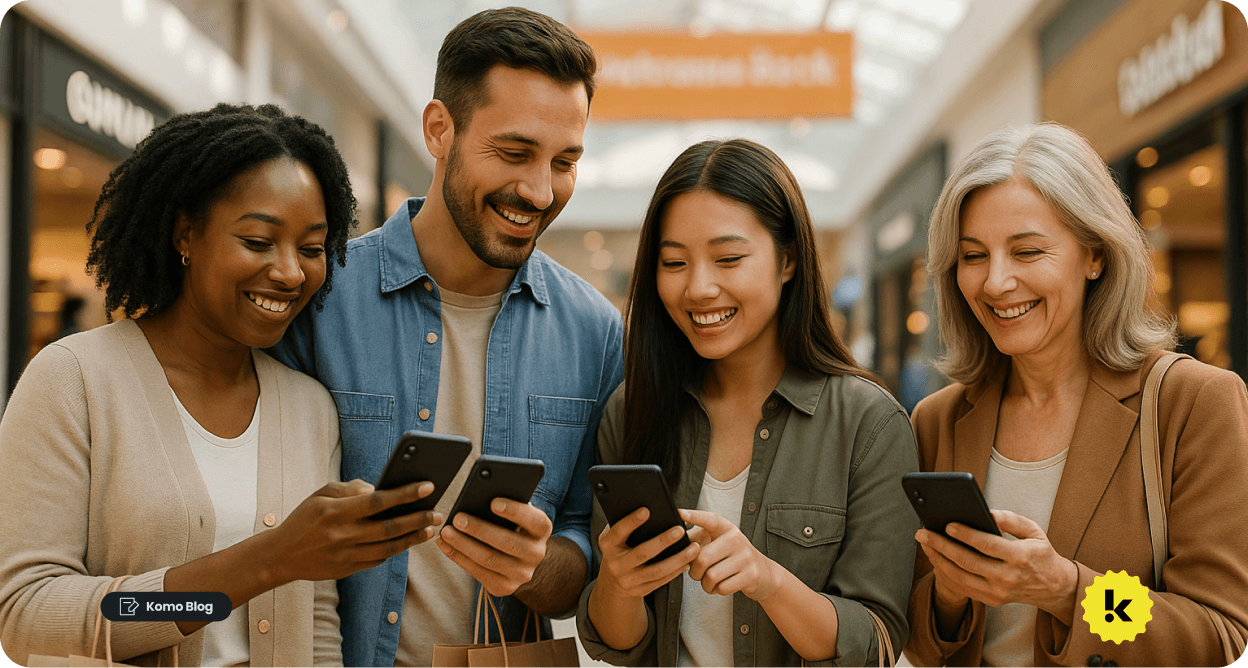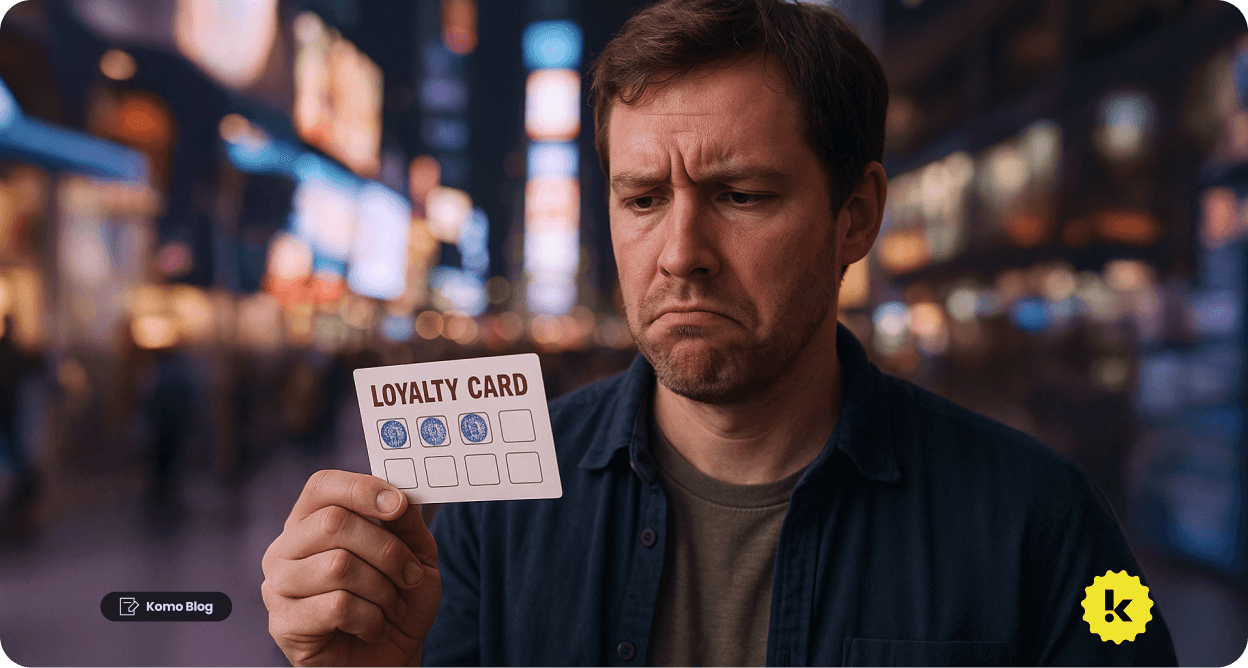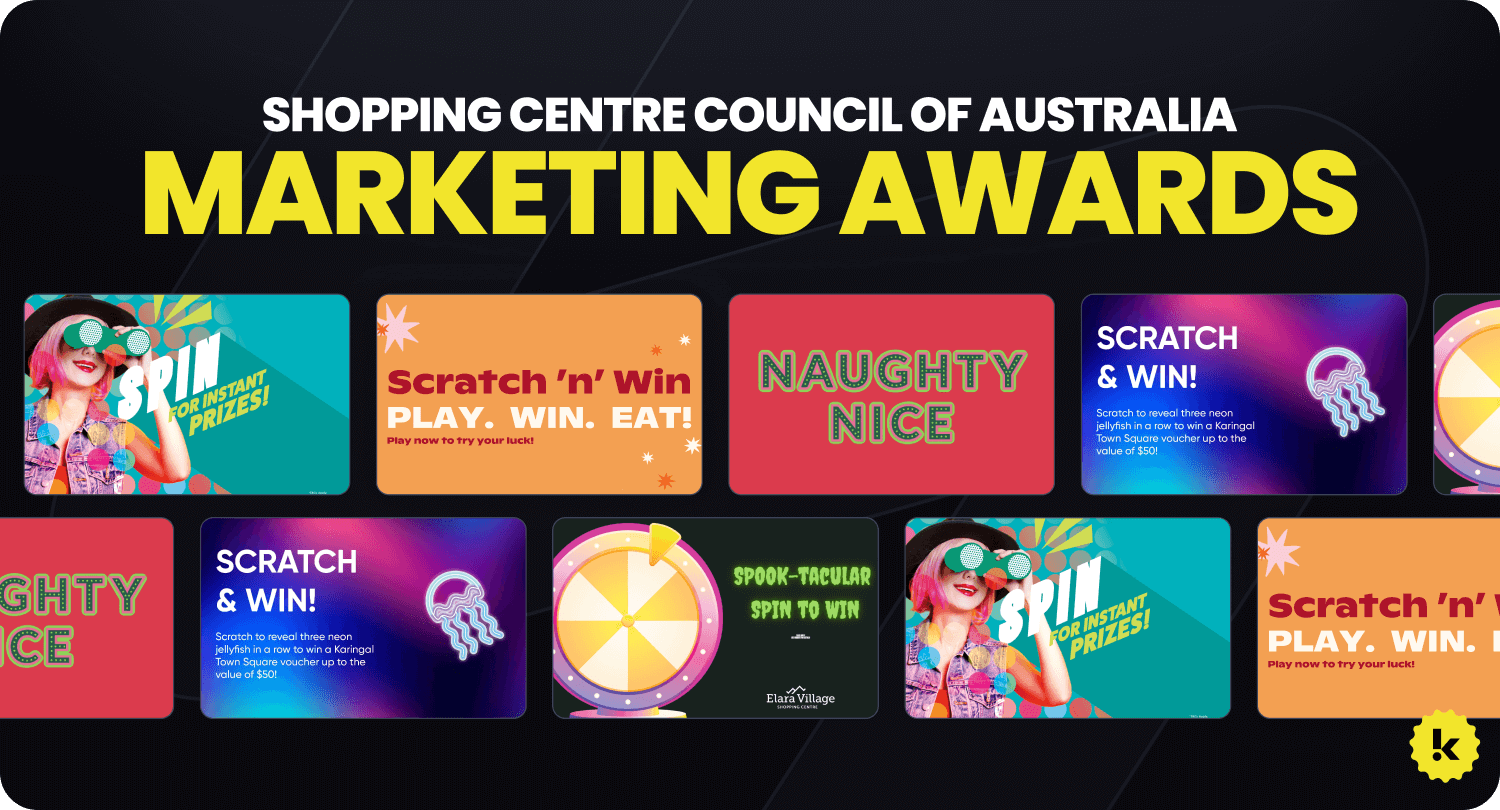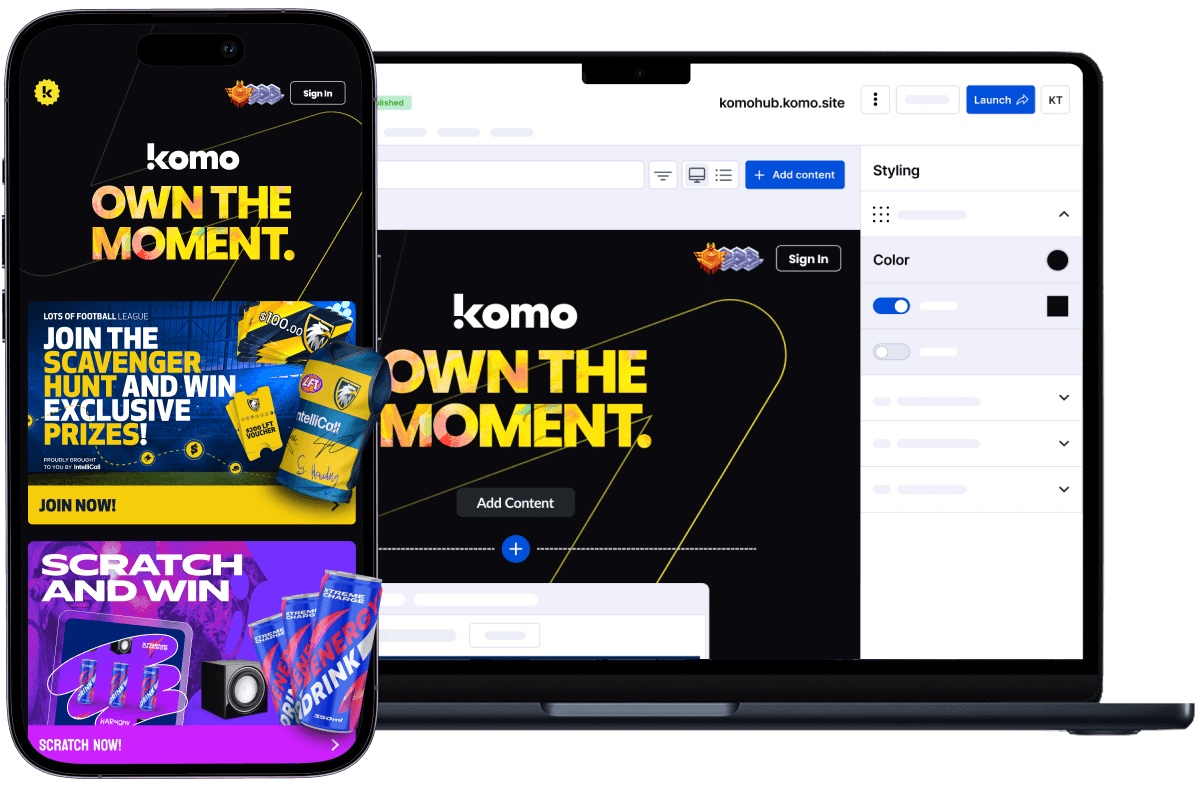In retail and shopping centres, "loyalty" is starting to lose its meaning. The points-for-purchase model that once anchored brand strategy is no longer enough. Shoppers have evolved, but many loyalty programs haven't.
In our webinar 'Winning the Modern Shopper: How Retail and Shopping Centres use AI and interactivity to drive loyalty that lasts', leading retail and shopping centre marketers came together to unpack this shift. The conversation revealed why loyalty today is no longer just about rewards - it's about building relationships, delivering value beyond spend, and engaging shoppers in ways that feel relevant and human.
Let's break down the challenge with traditional models, explore what loyalty actually means in 2025, and see how forward-thinking marketers are using new tools to drive real connection.
Why points and discounts no longer work
Joel Steel, CEO of Komo, opened the webinar with a stark reality: "74% of marketers say traditional loyalty models aren't cutting it anymore." And shoppers agree. Only 69% of consumers say they feel loyal to brands, down from 77% just two years ago.
Loyalty programs have become expected, not exciting. Seasonal discounts and transactional rewards still have a place but they don't inspire lasting connection. When every retailer is offering a similar reward system, there's little differentiation and even less emotional stickiness.
Consumers today expect more than a coupon in their inbox. They want moments of recognition, community, and fun. And when brands fail to deliver that, they blend into the background.
A better model: Behavior, belief, and belonging
Loyalty strategist Adam Posner, founder of The Point of Loyalty and author of For Love or Money, offered a new lens for understanding modern loyalty. He introduced the 3 Bs:
- Behavior: Getting shoppers to visit, stay, and spend.
- Belief: Building emotional connection. Do they love, trust, and recommend your brand?
- Belonging: Making shoppers feel part of something bigger. Community, culture, purpose.
These aren't buzzwords. They're outcomes. And they reflect the new reality that loyalty can't be siloed into a program. It must be embedded into the brand experience itself.
Take Sarah Moore, Portfolio Marketing Manager at Hawaiian. She leads campaigns across 11 shopping centres in WA and helped launch Hawaiian's new brand platform two years ago. "Loyalty wasn't a bolt-on," she said. "It was phase two of our brand rollout. The brand is about community. It had to feel like a natural extension."
This is a fundamental shift: loyalty is no longer a department or an initiative. It's a brand commitment.
Relevance, recognition, and a reason to return
Bianca Hopkins, Marketing Manager at Independent Brands Australia (Cellarbrations, The Bottle-O, IGA Liquor), echoed the change from a retail perspective.
"Our shoppers want to be seen. They want to feel valued. And they want brands to show up consistently," she said. "It's not just about offering the best price anymore. It's about creating moments that matter."
Bianca has led loyalty activations that drive hundreds of thousands of entries. Her team recently launched a gamified campaign that doubled its entries in just 90 minutes. That scale isn't driven by bigger discounts. It's driven by community-driven engagement, fueled by social sharing, in-store visibility, and always-on activation.
"People don't just want rewards," she said. "They want value for their attention."
And shoppers are proving it. These campaigns are seeing return engagement from known customers and strong participation from new audiences. One campaign delivered over 1,000 plays from previously inactive customers.
Why "always-on" engagement wins over seasonal spikes
Traditional loyalty programs often revolve around seasonal bursts: Christmas, Easter, Father's Day. But that cadence no longer matches shopper expectations. Today's consumers expect brands to be present more often, in more meaningful ways.
Theresa Tran, Customer Success Manager at Komo, works closely with brands like Hawaiian and IBA to evolve their engagement strategies. Her advice?
"Don't think in campaigns. Think in systems. Shoppers don't stop caring in between key selling periods, so don't go quiet."
Bianca agrees. "Our biggest focus now is plugging the gaps. We used to activate mainly during peak sales windows. Now, we run loyalty and gamified campaigns in February and August to stay relevant in between. These drive both engagement and acquisition - when we're not in a high-pressure sales period."
A quiet engine behind the shift
Without calling attention to it, many of the successes shared during the webinar had one thing in common: Komo.
The platform enables teams to launch low-lift, gamified experiences that capture rich first-party data, encourage repeat participation, and deepen customer profiles over time.
But what stood out most is how Komo's platform enables loyalty to be both measurable and memorable, connecting data capture with brand storytelling and shopper delight.
Whether it's powering Spin to Win activations, leaderboards that fuel community rivalry, or personalized reward journeys triggered by behavior, Komo is helping turn "loyalty" from a static program into a dynamic relationship.
Loyalty is an outcome, not a campaign
Retailers and shopping centres that treat loyalty as a one-off promotion will struggle to cut through. Those that treat it as an outcome (of behavior, belief, and belonging) are already seeing the benefits.
That doesn't require massive budgets. It requires a mindset shift.
As Adam said, "Loyalty is not an island off the coast of a brand. It's part of the mainland."
Brands that embrace this thinking, supported by the right tools, will earn something points can't buy: lasting relevance.
Want to hear more from Adam, Sarah, Bianca, and the Komo team? The full webinar includes practical tactics, real results, and a behind-the-scenes look at how teams are using data and engagement to fuel modern loyalty. Watch it on demand here.




